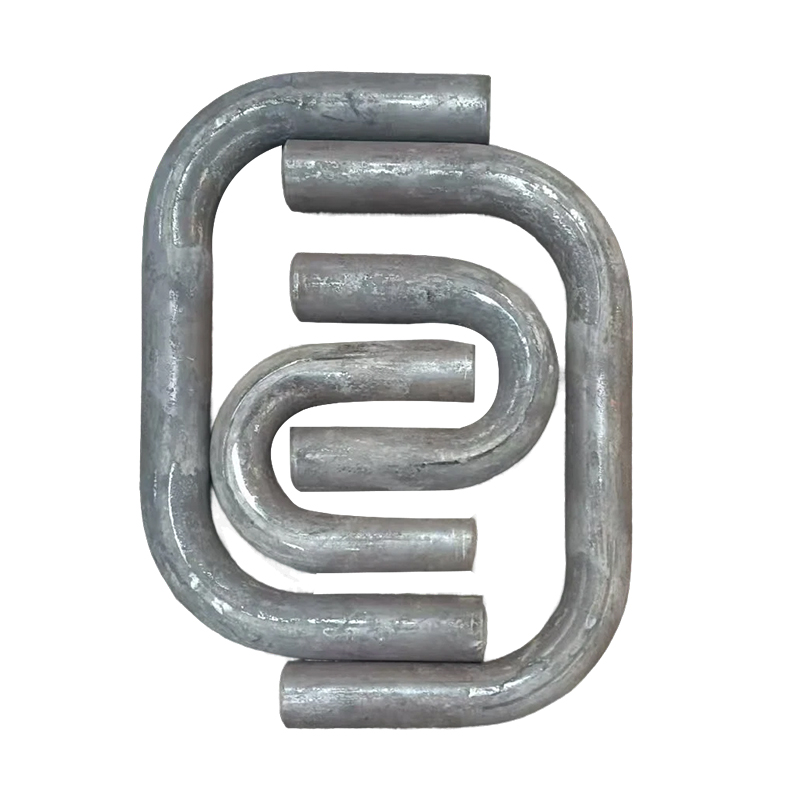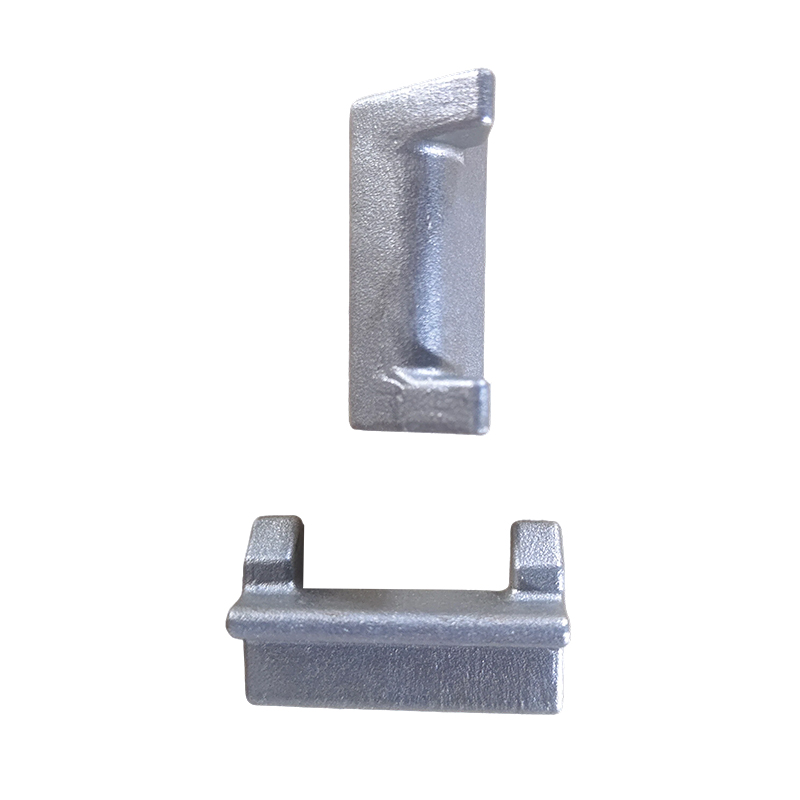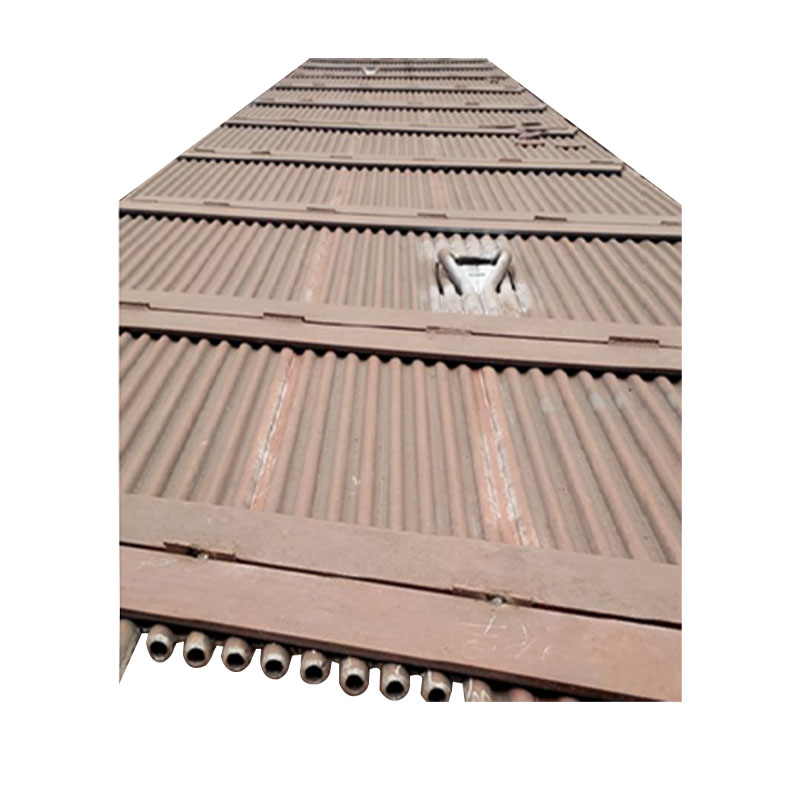How do pipe fittings improve system stability?
Release Time : 2025-04-28
In modern industry and construction, pipeline systems are vital components that transport various fluid media such as water, oil, gas, etc. As key connecting elements in the pipeline system, the quality and design of pipe fittings are directly related to the stability and safety of the entire system.
1. Selection of high-quality materials
The material selection of pipe fittings is crucial to ensure the long-term stable operation of the system. High-quality pipe fittings are usually made of high-strength, corrosion-resistant materials such as stainless steel, copper, brass or special alloys. These materials not only have good mechanical properties, but also effectively resist chemical corrosion and environmental erosion, thereby extending service life and reducing maintenance requirements.
Stainless steel pipe fittings: Stainless steel pipe fittings are widely used in industries such as chemical, food processing and pharmaceuticals due to their excellent corrosion resistance and strength. Especially when handling acidic or alkaline liquids, stainless steel pipe fittings can maintain long-term stability and avoid leakage or rupture caused by corrosion.
Copper and brass pipe fittings: Copper and brass pipe fittings have excellent thermal conductivity and antimicrobial properties and are commonly used in HVAC systems and drinking water supply pipes. They not only transfer heat efficiently, but also inhibit bacterial growth to ensure water quality safety.
Special alloy pipe fittings: Special alloy pipe fittings (such as titanium alloys, nickel-based alloys, etc.) perform well in extreme environments, such as high temperature and pressure or highly corrosive media. These materials are specially designed to maintain structural integrity and functional stability under harsh conditions.
2. Precision design and manufacturing process
In addition to material selection, the design and manufacturing process of pipe fittings are also important factors in improving system stability. Advanced manufacturing technology and strict quality control measures can ensure the dimensional accuracy, surface finish and sealing of the connection parts of pipe fittings.
High-precision manufacturing: Precision machining using CNC machine tools ensures that the dimensional tolerances of pipe fittings are extremely small and the fit is tight and gapless. This not only improves installation efficiency, but also reduces the risk of leakage caused by improper assembly.
Seamless welding technology: For pipeline systems that need to withstand high pressure or high temperature, seamless welding technology can significantly enhance the strength and sealing of the connection parts. Compared with traditional threaded connections, seamless welded pipe fittings are more durable and suitable for connections in key locations.
Surface treatment: Surface polishing, electroplating or passivation can further improve the corrosion resistance of pipe fittings, while reducing the friction coefficient and facilitating installation and removal. Good surface treatment can also prevent impurity deposition and reduce the possibility of blockage.
3. Reliable connection method
The main function of pipe fittings is to connect pipes, so the reliability of its connection method directly affects the stability of the entire system. The following are several common connection methods and their advantages:
Threaded connection: Threaded connection is simple and easy, and is widely used in low-pressure and low-temperature environments. In order to ensure the firmness and sealing of the connection, sealant is usually applied to the threads or sealing gaskets are used.
Flange connection: Flange connection is suitable for large-diameter pipelines and high-pressure systems. Two flanges are fixed together by bolts to form a reliable sealing interface. Flange connection is easy to disassemble and assemble, and is convenient for maintenance and replacement of parts.
Compression fittings: Compression fittings use compression fasteners to tightly press pipe fittings to pipes, which is suitable for small and medium-sized pipes. This connection method is quick to install and does not require welding, which is particularly suitable for occasions where frequent disassembly and assembly are required.
Socket welding: Socket welding firmly combines pipe fittings to pipes through welding, which is suitable for high-pressure and high-temperature environments. It provides excellent sealing and strength, but requires professional welding skills and equipment.
4. Ability to cope with complex working conditions
In actual applications, pipeline systems often face complex working conditions, such as temperature changes, pressure fluctuations, vibration shocks, etc. High-quality pipe fittings can effectively cope with these challenges and ensure the continuous and stable operation of the system.
Temperature adaptability: Some high-performance pipe fittings use special alloy materials and thermal insulation design, which can work normally in an extremely wide temperature range. For example, pipe fittings used in freezers or high-temperature furnaces must have good thermal expansion coefficient matching to avoid stress concentration and damage caused by temperature differences.
Pressure compensation mechanism: Some pipe fittings have built-in elastic elements or bellows structures that can automatically adjust internal stress when pressure fluctuates to prevent overload or fatigue damage. This adaptive design helps to extend the service life of pipe fittings and ensure the safety of the system.
Vibration reduction and noise reduction: In environments with vibration sources, such as pump stations or compressor rooms, the use of pipe fittings with vibration reduction functions can effectively absorb vibration energy, reduce noise pollution, and prevent loosening or breakage caused by vibration.
In summary, pipe fittings significantly improve the stability of the pipeline system through the selection of high-quality materials, precise design and manufacturing processes, reliable connection methods, and the ability to cope with complex working conditions. Whether facing conventional environments or extreme conditions, high-quality pipe fittings can ensure the safe and reliable operation of the system. In the future, with the continuous advancement of intelligent technology, pipe fittings will play an important role in more fields and provide users with more efficient and convenient services. Choosing the right pipe fittings is not only a guarantee of the quality of the current project, but also an investment in future long-term operations.
1. Selection of high-quality materials
The material selection of pipe fittings is crucial to ensure the long-term stable operation of the system. High-quality pipe fittings are usually made of high-strength, corrosion-resistant materials such as stainless steel, copper, brass or special alloys. These materials not only have good mechanical properties, but also effectively resist chemical corrosion and environmental erosion, thereby extending service life and reducing maintenance requirements.
Stainless steel pipe fittings: Stainless steel pipe fittings are widely used in industries such as chemical, food processing and pharmaceuticals due to their excellent corrosion resistance and strength. Especially when handling acidic or alkaline liquids, stainless steel pipe fittings can maintain long-term stability and avoid leakage or rupture caused by corrosion.
Copper and brass pipe fittings: Copper and brass pipe fittings have excellent thermal conductivity and antimicrobial properties and are commonly used in HVAC systems and drinking water supply pipes. They not only transfer heat efficiently, but also inhibit bacterial growth to ensure water quality safety.
Special alloy pipe fittings: Special alloy pipe fittings (such as titanium alloys, nickel-based alloys, etc.) perform well in extreme environments, such as high temperature and pressure or highly corrosive media. These materials are specially designed to maintain structural integrity and functional stability under harsh conditions.
2. Precision design and manufacturing process
In addition to material selection, the design and manufacturing process of pipe fittings are also important factors in improving system stability. Advanced manufacturing technology and strict quality control measures can ensure the dimensional accuracy, surface finish and sealing of the connection parts of pipe fittings.
High-precision manufacturing: Precision machining using CNC machine tools ensures that the dimensional tolerances of pipe fittings are extremely small and the fit is tight and gapless. This not only improves installation efficiency, but also reduces the risk of leakage caused by improper assembly.
Seamless welding technology: For pipeline systems that need to withstand high pressure or high temperature, seamless welding technology can significantly enhance the strength and sealing of the connection parts. Compared with traditional threaded connections, seamless welded pipe fittings are more durable and suitable for connections in key locations.
Surface treatment: Surface polishing, electroplating or passivation can further improve the corrosion resistance of pipe fittings, while reducing the friction coefficient and facilitating installation and removal. Good surface treatment can also prevent impurity deposition and reduce the possibility of blockage.
3. Reliable connection method
The main function of pipe fittings is to connect pipes, so the reliability of its connection method directly affects the stability of the entire system. The following are several common connection methods and their advantages:
Threaded connection: Threaded connection is simple and easy, and is widely used in low-pressure and low-temperature environments. In order to ensure the firmness and sealing of the connection, sealant is usually applied to the threads or sealing gaskets are used.
Flange connection: Flange connection is suitable for large-diameter pipelines and high-pressure systems. Two flanges are fixed together by bolts to form a reliable sealing interface. Flange connection is easy to disassemble and assemble, and is convenient for maintenance and replacement of parts.
Compression fittings: Compression fittings use compression fasteners to tightly press pipe fittings to pipes, which is suitable for small and medium-sized pipes. This connection method is quick to install and does not require welding, which is particularly suitable for occasions where frequent disassembly and assembly are required.
Socket welding: Socket welding firmly combines pipe fittings to pipes through welding, which is suitable for high-pressure and high-temperature environments. It provides excellent sealing and strength, but requires professional welding skills and equipment.
4. Ability to cope with complex working conditions
In actual applications, pipeline systems often face complex working conditions, such as temperature changes, pressure fluctuations, vibration shocks, etc. High-quality pipe fittings can effectively cope with these challenges and ensure the continuous and stable operation of the system.
Temperature adaptability: Some high-performance pipe fittings use special alloy materials and thermal insulation design, which can work normally in an extremely wide temperature range. For example, pipe fittings used in freezers or high-temperature furnaces must have good thermal expansion coefficient matching to avoid stress concentration and damage caused by temperature differences.
Pressure compensation mechanism: Some pipe fittings have built-in elastic elements or bellows structures that can automatically adjust internal stress when pressure fluctuates to prevent overload or fatigue damage. This adaptive design helps to extend the service life of pipe fittings and ensure the safety of the system.
Vibration reduction and noise reduction: In environments with vibration sources, such as pump stations or compressor rooms, the use of pipe fittings with vibration reduction functions can effectively absorb vibration energy, reduce noise pollution, and prevent loosening or breakage caused by vibration.
In summary, pipe fittings significantly improve the stability of the pipeline system through the selection of high-quality materials, precise design and manufacturing processes, reliable connection methods, and the ability to cope with complex working conditions. Whether facing conventional environments or extreme conditions, high-quality pipe fittings can ensure the safe and reliable operation of the system. In the future, with the continuous advancement of intelligent technology, pipe fittings will play an important role in more fields and provide users with more efficient and convenient services. Choosing the right pipe fittings is not only a guarantee of the quality of the current project, but also an investment in future long-term operations.







